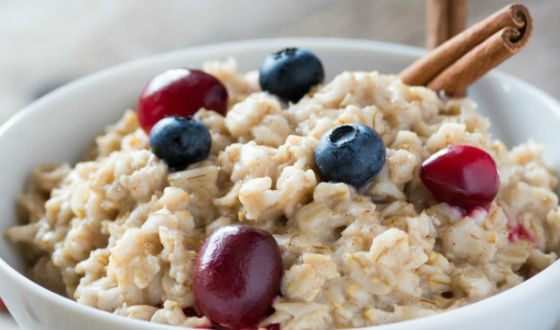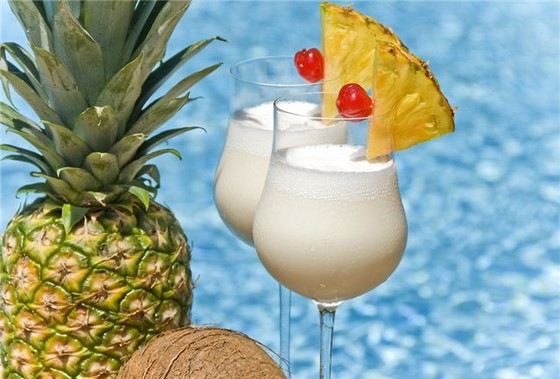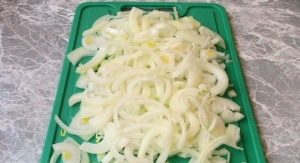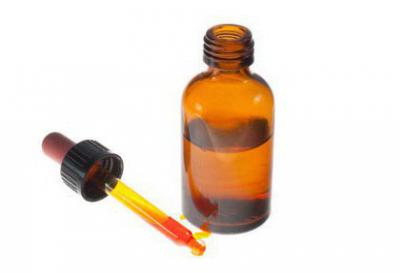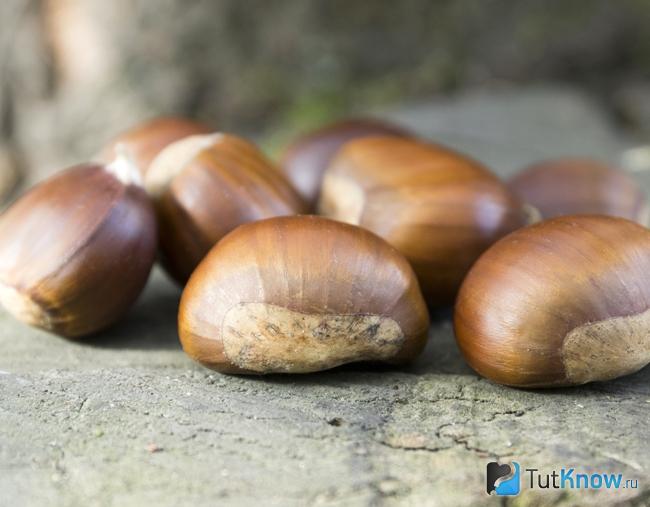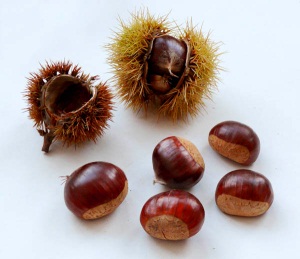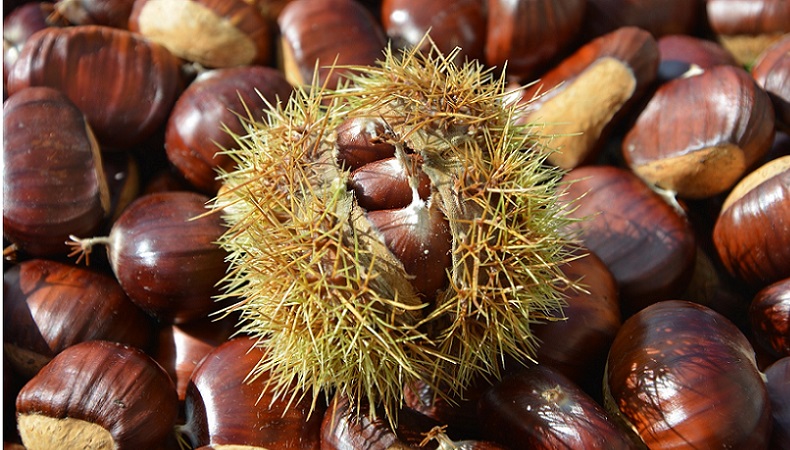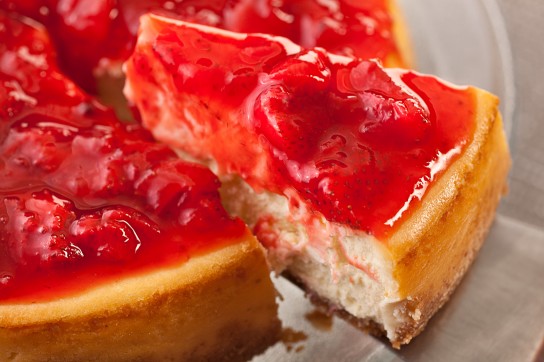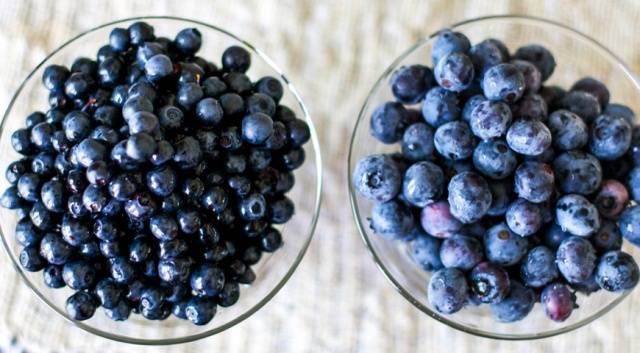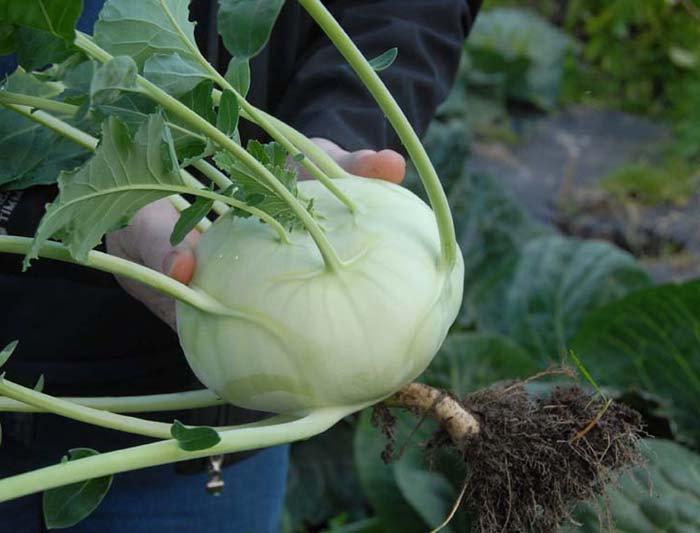Chestnut (fruit): medicinal properties, use in folk medicine. Benefit and harm, calorie edible chestnut
The well-known plant chestnut has two varieties: edible (noble chestnut) and inedible (horse chestnut). The first is used in cooking, the second in traditional medicine. Despite the wide distribution of the plant, many do not know how chestnut nut is useful and what contraindications it has.
What is useful and harmful chestnut?
Edible chestnuts, like other nuts, are very nutritious and contain a large amount of vitamins and minerals. But they also have a lot of carbohydrates and starch, which brings them closer to potatoes. this plant is not so small - 180 kcal per 100 grams. Therefore, although there is a special chestnut diet, to lose weight, the noble chestnut nut should be used very carefully. But for a vegetarian menu, it is indispensable as a source of fat and protein.
Horse chestnut has many healing properties. The extract from it is used to treat diseases such as thrombosis, hemorrhoids, varicose veins. Infusion is washed in the nasopharynx with angina and sinusitis, compresses with chestnut decoction are used to treat burns and poorly healing wounds, rheumatism.
In addition to the benefits and harm of chestnut nuts can also be. If you eat inedible fruits, you can poison them. And sweet chestnuts in large quantities can cause bloating and. These nuts are contraindicated for pregnant women and nursing mothers, people suffering from kidney failure, and diabetics.
How to eat chestnut nuts?
Edible fruits can be cooked, baked in the oven, grilled. Cooking them is a snap. For example, to cook, notched chestnuts are dipped in boiling water for 20 minutes. For baking, it will take a little longer - about half an hour. Many are interested in the question of whether it is possible to eat chestnut nuts raw. They are edible and fresh, although not everyone likes the taste of such fruits.
Chestnut is a beautiful tree, especially at the time of flowering, when its large paniculate inflorescences give the tree an elegant, festive appearance, a genus of plants from the dish-bearing family. About 30 species of trees or shrubs, characteristic of the temperate and tropical zones. The most important species is considered ordinary chestnut (C. vulgaris), in southern. Europe, in Crimea, Transcaucasia, Africa, south. Asia and America. It has long been bred for the sake of the fruit, and sometimes reaches a deep age, up to 1000 years. The wood is very durable, goes to barrel and joinery. Mealy and sweetish chestnut fruits are a commodity in southern countries.
Now you can buy different varieties of chestnuts, but the most popular Christmas variety is sweet chestnuts. They are grown in many parts of the world, but be careful not to try decorative varieties growing on the streets.
Under natural conditions, grows in the south of the Balkan Peninsula (Greece, Bulgaria) at an altitude of up to 1200 m above sea level. In culture, it is widely distributed not only in the subtropical, but also in the temperate zone of the Northern Hemisphere, in areas with a humid and warm climate.
Before Christmas, on the streets of many European cities you can see how chestnuts are baked. This ancient tradition began many years ago when special pans were made for baking chestnuts. To bake chestnuts at home, you first need to clean them from the outer shell and bitter membranes, then rub them with a brush to erase all the dirt, put them on skewers or just make small cuts in the skin and put on an open fire (if you don't make an incision, they can explode).
Calorie chestnut
Chestnuts are high in carbohydrates. In 100 g of fresh product - 166 kcal, in 100 g of cooked and stewed chestnuts - 131 kcal. The calorie content of roasted chestnuts is 182 kcal. The lowest calorie are steamed chestnuts, as they contain only 56 kcal, but retain all the nutrients.
Nutritional value per 100 grams:
Seeds contained in fruits include coumarin glycosides, triterpene escin, fatty oil (up to 5-7%), protein substances (up to 10%), starch (up to 50%), tannins (about 1%). Glycosides, tannins, sugars, ascorbic acid (vitamin C), and other compounds were found in the cortex. Leaves contain glycosides, pectin and carotenoids. The flowers are rich in flavonoids, tannins, pectin and mucus.
The fruits and chestnut bark contain triterpene glycoside escin, coumarin esculletin and its glycoside esculin. In addition, flavonoid glycosides were found - quercetrin, isocvercitrin, quercetin and kempferol. Starch, fatty oil, sterols, tannins were found in the fruits. Quercetrin, isocvercitrin, quercetin, rutin and spireoside, astragaline, carotenoids - lutein, violaxanthin were found in the leaves. The content of active substances in the leaves almost does not change during the summer. The flowers contain flavonoids - derivatives of kempferol and quercetin.
It has been experimentally established that alcoholic extract of fruits has anti-inflammatory and anti-edematous properties, reduces blood viscosity, strengthens the walls of capillaries, lowers blood pressure, normalizes cholesterol and lecithin in the blood, and reduces the formation of fatty plaques in the aorta. It is also known that the extract constricts blood vessels and acts as an anesthetic. Usually, ready-made pharmacy preparations of escusan and esflazide are used.
Galenic horse chestnut preparations are widely used in folk medicine: flower juice is drunk with varicose veins (thrombophlebitis), atherosclerosis, and hemorrhoids. Juice of flowers, preserved by alcohol, tincture of flowers or fruits are useful for thrombophlebitis and hemorrhoids; fruit infusion - with diarrhea (diarrhea), malaria and chronic bronchitis in smokers. A decoction of the skin of the fruit is used for uterine bleeding. Freshly chopped leaves and fruit tincture are also used externally.
For the preparation of medicines, bark of young branches, leaves, flowers and fruits are harvested. The bark is harvested in spring, cut into pieces and dried immediately after harvest in the open air. Flowers are harvested in May. They are pulled off from inflorescences and dried on the first day in the sun, and then under a canopy, in the open air. Leaves are collected during flowering, without stalks, spread in a thin layer under a canopy or in a well-ventilated room. This type of raw material is exported. Fruits are harvested during the period of their full maturity, when they fall out of the leaves. Dry them in a warm, ventilated area.
Hazardous properties of chestnuts
Chestnut is an allergen, so it is contraindicated in case of individual intolerance. People with sugar
Chestnuts are the fruits of a beech family plant and are nuts with a low calorie content because they contain less fat than other nuts.
But they differ not only in this, they are rich in irreplaceable nutrients.
They are very rich in starch, which makes them look more like than the rest of the nuts. In addition, they contain a lot of fiber.
One hundred grams of chestnuts give 165 kcal and only two grams of fat.
You will be amazed at the result if you include chestnuts in your diet, there are good reasons for this.
Chestnuts during pregnancy
Benefit
Eating chestnuts is suitable for almost everyone, and especially recommended for people who suffer from stress or. It is also beneficial to eat chestnuts during lactation and pregnancy.
They are suitable for people with liver disease and those who suffer from high blood pressure and watch for low salt intake.
Chestnut is a very healthy product and is suitable for people of any age, with the exception of people who suffer from diabetes.
 The combination of trace elements makes this nut an ideal “antidote” against fatigue.
The combination of trace elements makes this nut an ideal “antidote” against fatigue.
In particular, they help improve blood circulation and regulate blood pressure.
Here are the benefits of using chestnuts:
- thanks to vitamin B2 they reduce the effects of skin aging;
- strengthen bones and teeth due to the high content of phosphorus;
- prevents due to the presence of an amino acid such as tryptophan;
- protect the nervous system with its high content of vitamin B and phosphorus;
- vitamin B2 also has a positive effect on eye health;
- high fiber helps digestion;
- they are recommended for kidney diseases, due to the high potassium content;
- contribute to improving memory;
- good for hypertension and cardiovascular disease.
Harm
Chestnuts are rich in carbohydrates, so they are not recommended for those suffering from. Also, they should be used with caution for overweight people.
Indications
Indications for eating chestnuts are:

- stress, depression;
- pregnancy, breastfeeding;
- cardiovascular problems;
- memory problems
- physical fatigue;
- as an anti-inflammatory agent;
- as a tonic and restorative.
Chestnuts are rich, which affects the increase in breast milk in women.
Chestnut contains a lot of protein, calcium, iron, phosphorus, and vitamins.that can regulate blood flow, stimulate the kidneys and provide the body with energy and nutrients.
Therefore, chestnuts can be considered as part of the diet during pregnancy and lactation.
Contraindications
A chestnut does not have many contraindications. Them not recommended for nutrition of people diagnosed with diabetes, in this case, experts advise against chestnuts, as they are very rich in carbohydrates.
Should also avoid chestnuts in cases of indigestion, because they can cause bloating, especially when consumed raw.
Ways to use
 Oven-baked chestnuts in charcoal or grill. So that the shell does not burst the chestnuts, it must be incised. Chestnuts prepared in this way can replace part of the baking.
Oven-baked chestnuts in charcoal or grill. So that the shell does not burst the chestnuts, it must be incised. Chestnuts prepared in this way can replace part of the baking.
Boiled chestnuts. A great side dish for any kind of red meat, poultry or roast beef.
For cooking, chestnuts are boiled in water with a small amount of anise, or in milk with the addition of cinnamon or vanilla to taste. Also boiled chestnuts can be served in the form of mashed potatoes.
Raw chestnuts. It can be consumed only when fully ripened.
Candied fruit. They are used to make cakes and candied chestnuts in the glaze. To prepare this French dessert, the chestnuts are peeled, soaked in sugar syrup and coated with glaze.
Chestnut Flour used for baking.
Precautionary measures
You should use chestnuts with caution, if your body is not used to such foods, they can cause an allergic reaction.
In addition, the use of a large number of chestnuts can adversely affect the functions of the pancreas.
If you tend to be overweight, keep in mind that chestnuts are rich in carbohydrates.
 Be careful and do not confuse edible chestnut with horse. Raw horse chestnuts can lead to poisoning.
Be careful and do not confuse edible chestnut with horse. Raw horse chestnuts can lead to poisoning.
Chestnuts are a good product that should be introduced into the diet. They have many useful properties, and not many contraindications. They can and should be consumed during pregnancy.
Chestnuts, the benefits and harms of which have been known to people since ancient times, are used not only in folk, but also in traditional medicine. About 30 species of this representative flora grow in nature, the most widely used by people are fruits and other parts of the plant of 2 types of chestnuts: horse and noble.
The benefits and harms of a noble chestnut
Chestnuts are well known not only as sources of medicinal raw materials. Trees have a very aesthetic appearance, therefore, are widely used for landscaping cities. Flowering plants are very beautiful. In addition, these are magnificent honey carriers. Chestnut honey is highly valued for its exquisite taste, amazing aroma and pronounced healing properties. The strong wood of these trees has long been used in carpentry and for the manufacture of barrels. Sweetish edible fruits are exported by some Mediterranean countries.
The fruits are mainly used in cooking. Chestnuts, the benefits and harms of which are determined by their chemical composition, are a delicacy for many gourmets. They contain a large amount of potassium and copper, so they are useful for heart failure. A fairly high content of iron and phosphorus improves the condition of anemia. Compared to other nuts, chestnuts are record holders for the presence of vitamins C, PP, A, B. Due to their low fat content (up to 5%) and high enough protein and carbohydrate content, fruits are highly appreciated by those who monitor their weight. You can satisfy your hunger by eating only 3-4 fried fruits. The high content of vegetable protein in chestnuts makes them an indispensable product, along with legumes, for many vegetarians.

How to eat chestnuts? There are many ways to use fruits in cooking:
- powder is used to make coffee;
- ground fruits are used in the preparation of marzipan and chocolate;
- edible chestnuts are added to the side dish to the meat;
- stuffed with nuts nuts;
- roasted chestnuts are added to soups;
- from them you can make pasta for sandwiches;
- they are just fried for the Christmas holidays.
For those who do not know whether it is possible to eat chestnuts raw, we answer: you can eat raw. But, like all nuts, roasted is still tastier.
It is believed that the use of nuts of a noble chestnut cheers up, helps fight chronic fatigue and stress. In addition, the fruits normalize metabolism, restore the composition of cartilage and bone tissue, have a beneficial effect on the functioning of the heart, circulatory system and kidneys, relieve swelling and have a slight analgesic effect. Chestnut vegetable oils improve skin condition and restore hair structure.
Since the fruits are very satisfying, it is difficult to overeat, but abuse can lead to bloating and constipation even in a healthy person. Allergy sufferers also should not get involved in them, as nuts can provoke an exacerbation of allergies. You can not often eat the fruits of a noble chestnut and people who have low blood clotting and low blood pressure.
How to distinguish edible chestnut from horse?
Be careful and do not confuse noble and horse chestnuts. The nuts of these trees are really similar in appearance. But the trees themselves are very different from each other. Edible chestnut belongs to the Bukov family, it grows mainly in Mediterranean countries. Konskiy is a separate family of the Konskokashtanovs; its distribution range also covers northern countries. He has inflorescences similar to openwork candles, the stem of the inflorescence is located vertically up. And at the edible inflorescences collected in long earrings. Complex leaves of horse chestnut are similar to an open palm, 1 sheet consists of 5-7 plates. The edible leaves are simple, with small sharp teeth, up to 30 cm long.

The fruits of both trees are covered with a meaty shell. The green hilly shell of the horse fruit looks like an underwater mine. And the edible shell is brown in color with small spikes. Ripe fruits fall out of the shell. The chestnut has a smooth, shiny brown surface with a bright matte spot on one side.
These 2 fruits taste very different from each other. The bitter taste of horse makes it suitable only as an additive to livestock feed. By the way, from ancient times, the Turks fed horses, exhausted in long hikes, chestnuts. At the same time, horses recovered very quickly. Hence the name.
The benefits and harms of horse chestnut
What is useful chestnut? Although horse chestnuts are not suitable for food, they have a rich chemical composition. Horse chestnut, the benefit and harm of which is determined by biologically active substances, has been used to treat various diseases for a very long time. In the Mediterranean countries, fruits and bark were used as far back as the Middle Ages in the treatment of fever, amoebic dysentery and malaria. Powder from nuts was applied to varicose ulcers. With gout, it was recommended to take baths with a decoction of chestnuts.
In Germany, in the eighteenth century, with lingering diarrhea, hemorrhoids, and uterine bleeding, a decoction of the bark was used. Sebastian Kneipp, a German priest who devoted his whole life to developing healing methods that are simple and accessible to everyone, advised using horse chestnut for thrombophlebitis, for cleansing the liver and gastrointestinal tract, for inflammation of the female genital organs, colds, radiculitis, and rheumatic pains.

After years of research, alcohol tincture of the plant entered the official medicine of European countries in 1866. Since that time, they began to sell it in pharmacies for the treatment of chronic inflammation of the intestines, gout and hemorrhoids. Since the end of the 19th century, horse chestnut has been used by doctors in France to treat varicose veins, prostatitis and prostate adenoma. In the middle of the twentieth century, in Germany began the mass production of drugs containing extracts from fruits and used in the expansion of veins. In modern pharmaceuticals, plant extracts are available as part of the following drugs:
- Reparil-gel;
- Aescusan;
- Eskuvi;
- Esaven Gel;
- Avenol et al.
The pharmaceutical effect of the drugs is primarily due to the content of bioactive compounds in almost all parts of the plant. In the course of scientific research, it was found that escin, present in the cortex and fruits, has a vasoconstrictive effect, it relieves inflammation and swelling. The calming effect of drugs is used in the pathology of the nervous system (hypochondria, hysteria). Such drugs are highly effective in the treatment of radiation sickness, as they actively purify the blood from radionuclides and toxins.
Chestnut, whose beneficial properties are expressed in anti-inflammatory, decongestant, analgesic, anticonvulsant, wound healing, hemostatic, astringent, bactericidal action, has found widespread use in folk medicine in many countries of the world.
For the treatment of varicose veins on the legs and hemorrhoid cones, freshly squeezed juice of plant flowers is taken inside. 30 drops of juice should be instilled in 1 tbsp. l and add water. Take 2 times a day.
Flower juice can be preserved. To do this, it is diluted in half with water, brought to a boil and rolled into jars. At the reception, 30-40 g of juice is used.

A decoction of green seed coat has a pronounced hemostatic effect. Therefore, it is used for uterine and intestinal bleeding, not associated with cancer processes.
With leukemia, an infusion of horse chestnut flowers can be an excellent additional means of restoring blood composition. For its preparation, 1 tbsp. l pour flowers in 1 cup of cold water, bring to a boil and insist 8 hours. Infusion is used for 1 tbsp. l every 15-20 minutes. Thus, up to 1 liter of infusion is drunk this day. The course of treatment is 2 cycles of 20 days with a break of 10 days.
The same infusion and the same treatment regimen are used for brain tumors.
The shiny brown shell of chestnuts is used in the preparation of a treatment for prostatitis. For this, the seed peel is ground into powder and diluted in vodka in a ratio of 1:10, i.e. on a bottle of vodka (0.5 l) you need to take 50 g of powder. Insist for 1 month. Take 20 drops 5-6 minutes before meals. The treatment is also course. 20 days of drug use alternate with 10 days of rest.
A decoction of horse chestnut leaves is prescribed for rheumatism and gout, cholecystitis, vasospasm, inflammation and intestinal atony. The effectiveness of a decoction of leaves with inflammation of the bronchi and pulmonary tuberculosis has been proven. A decoction of bark and leaves is especially useful for smokers.
The components are harvested in the spring, immediately after the flowering of the tree. It is better to collect bark from young thin branches. Raw materials are dried in a shady, well-ventilated area.
The rich content of useful mineral components and bioactive substances in horse chestnut flower extracts has identified them as a valuable component of many cosmetics. They neutralize the effect of free radicals, slow down aging, tone the walls of the capillaries, enhance blood microcirculation and have a calming effect. Therefore, drugs can be used for itchy dermatitis.
Precautionary measures
The health benefits of chestnuts are expressed in the many recipes of traditional medicine. However, when using drugs, precautions must be observed.
Although the fruits are considered slightly toxic, they are not recommended for pregnant women and nursing mothers.
In all cases, funds can be taken only after consultation with your doctor.
In the article we discuss chestnut. You will learn the chemical composition and medicinal properties of walnuts. We will tell you how to eat it during pregnancy and in children. Following our tips, you will learn how to grow chestnuts in the garden and at home.
Chestnut - a deciduous tree of the Beech family (lat. Fagaceae), which reaches a height of 50 meters. Other names: real chestnut, noble chestnut, edible chestnut. The trunk of the tree in diameter reaches 2 meters. It is covered with a thick furrowed bark of dark brown color.
Sharp-toothed leaves of oblong-oval shape. In the summer, light green, in the fall they turn bright yellow. The length of the sheet plate is up to 20 cm.
Chestnut flowers are collected in spike-shaped inflorescences, up to 15 cm long. Most of them consist of stamen flowers. Pestaceae are located only at the base of the inflorescence.
Wild chestnut begins to bear fruit from the age of 12-15 years, cultivated - from 4-10 years. In the first 5-8 years of life, the tree grows slowly. It bears fruit every 2-3 years in September - October.
What does chestnut look like?
The spherical fruits of the chestnut are surrounded by a plush, densely covered with long spines. At the ripening stage, it is green; in ripe fruit, it is brown. Inside are 1 to 4 nuts. When ripening, the plus splits, and the fruit falls freely.
Walnut has a rounded or flattened shape. The surface of the fruit is smooth, dark brown. The diameter of the chestnut is from 3 to 6 cm.
Where does chestnut grow
Chestnut prefers a warm climate, moist and slightly acidic soil. The plant does not tolerate drought and prolonged heat.
Chestnut grows on the Atlantic coast of the USA, in East Asia, the Balkans and the Mediterranean coast. It is found in Russia in the Crimea and Transcaucasia. In Europe, chestnut fruits grow to the size of large mandarin, and in Armenia and Azerbaijan rarely reach the size of a walnut.
How to distinguish edible chestnut
Do not confuse edible chestnut with horse chestnut, whose nuts are not eaten. Plants differ in the shape of the leaf plate, the structure of inflorescences and the appearance of the fruit.
The leaves of the edible chestnut are simple, elongated, with spines along the edges. The horse chestnut leaves serrate, more smooth, collected in fan-shaped plates.
Edible chestnut inflorescences are long narrow earrings. Horse chestnut is distinguished by lush inflorescences, so it is often used as an ornamental plant.
The fruits of the edible chestnut are covered with brown needle-shaped croup and look like hedgehogs. The chestnut horse’s plus is bright green, tuberous, with rare spikes. Edible fruits have a characteristic mealy sweet taste, horse chestnut - bitter.
The chemical composition of chestnut
Chestnut contains:
- carbohydrates;
- proteins;
- fats
- fiber;
- vitamin A;
- b vitamins;
- vitamin C;
- tannins;
- pectins;
- phosphorus;
- calcium;
- magnesium;
- titanium;
- cobalt;
- fluorine;
- zinc.
Calorie chestnut
Calorie raw chestnut per 100 g. is 166 kcal. Roasted walnut contains 182 kcal per 100 g.
Useful properties of chestnut
The benefits of chestnut are in its rich composition. Nuts have anti-inflammatory, antipyretic, analgesic and antitussive effects.
They are used to treat colds. They quickly relieve painful coughs, clear the bronchi. Chestnuts are no less effective for the digestive system. They improve appetite and help with diarrhea. Nuts have a diuretic effect and normalize kidney function.
Chestnuts reduce blood pressure, strengthen the walls of blood vessels, relieve varicose veins. Nuts have hemostatic and wound healing effects. They are used to restore skin after cuts or burns.
Chestnut application
Chestnuts are used in folk medicine to treat diseases of the respiratory, nervous, digestive systems. Nuts effectively cope with gout, arthritis, radiculitis. For treatment, they use whole fruits, and also make compresses with nut mass.
Chestnuts are used in cooking for preparing soups, side dishes and desserts. Chestnut dishes are very popular in Europe. Europeans' favorite dessert is chestnuts with chocolate syrup.
How to cook chestnuts
Raw chestnuts can be prepared in two ways: boil or fry. The main rule - before cooking, nuts must be freed from the shell and the inner film. If this is not done, then the fruits will become bitter.
To clean the nuts, cuts are made on them, after which the chestnuts are cooked in boiling water for 5 minutes, removed from the heat, covered with a lid and left for another 15 minutes. Then peel the nuts while they are warm.
To bring the peeled nuts to readiness, they are boiled over medium heat for 15 minutes or roasted in a pan under the lid on both sides. In the oven, cooking nuts takes 20-25 minutes.
Slimming Chestnut
Chestnut has a low fat content, it is used in dietetics to reduce excess weight. It relieves cellulite, relieves swelling and improves blood microcirculation.
Nut oil is added to anti-cellulite creams and lotions. From fruits and flowers, plants make tinctures for oral administration, which also help with weight loss.
Chestnut for children
Official medicine does not give clear recommendations regarding the timing of the inclusion of chestnuts in the children's diet. Pediatricians do not recommend introducing nuts before 4-5 years. Doctors believe that until this age, chestnut has a strong burden on the digestive system of the baby, can cause constipation and bloating.
It is best to give the child not raw nut, but boiled in the form of gruel. For example, you can mix it with mashed potatoes or add to soup.
Chestnut during pregnancy
Chestnuts help to cope with sudden mood swings, protect against stress and depression, which is especially important during pregnancy. Nuts normalize pressure and sleep, strengthen bones and teeth. They contain a large amount of fiber, which is useful for digestion.
Chestnuts enhance the production of breast milk during lactation. Rich in vitamins and minerals, it improves milk quality. Before eating nuts, consult your doctor.

Chestnut Jam
In cooking, chestnut jam is often used both in pure form and for the preparation of pastries and desserts. This product is stored for about six months. To extend the shelf life, jam is rolled up in sterile jars or frozen.
You will need:
- peeled chestnuts - 500 g;
- sugar - 500 g;
- water - 350 ml;
- rum - 20 ml.
How to cook:
- Grind the prepared peeled nuts into crumbs using a sieve.
- Pour water into a stewpan, put on a fire, pour sugar in, then stir until completely dissolved.
- Pour the chopped chestnuts and stir occasionally so that they do not burn, for 20-30 minutes.
- As soon as the jam thickens and becomes saturated brown, add rum, mix and cook for another 2 minutes.
- Remove from heat and pour into cans.
Calorie content:
Calories 100 gr. chestnut jam - 392 kcal.
Chestnut Honey
Chestnut honey has many beneficial properties. It is a powerful natural antibiotic. It is used internally and used for external treatment of wounds, cuts and burns. The product has an anti-inflammatory effect.
It is often used to treat diseases of the respiratory tract and genitourinary system. Chestnut honey improves appetite and normalizes digestion. The product is indispensable in the fall and spring, it strengthens the immune system and helps to resist viral diseases.

Contraindications and limitations
Contraindications to the use of chestnut:
- renal failure;
- gastric bleeding;
- menstrual irregularities;
- diabetes;
- individual intolerance.
The daily intake of chestnuts is 40 grams. Overeating nuts leads to digestive disorders: bloating, a feeling of heaviness and constipation.
How to grow chestnut from walnut
Chestnut can be grown on a personal plot or at home. For starters, ripened fruits are harvested in autumn. They must be intact, without damage.
In order to grow chestnut in the country, it is enough to plant several nuts at a distance of 10 cm from each other, at a depth of 5 cm in the autumn. In the spring, the plant will sprout.
To grow chestnut at home, first he needs to provide a “winter sleep”. The collected nuts are stored on the balcony until frost, then they are placed in a container with earth and put in the refrigerator on the lower shelf for the whole winter. At the end of February, they are transferred to pots of earth and put on a windowsill.
The plant is periodically watered, and after 1-2 months it sprouts. For the tree to grow at home, it is necessary to periodically prune the roots, since by the year they grow significantly.



